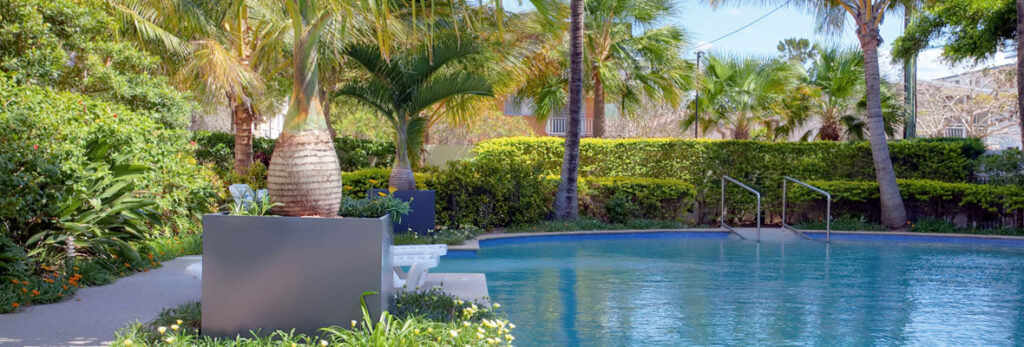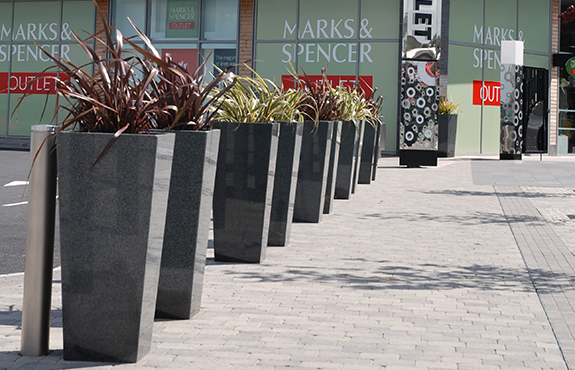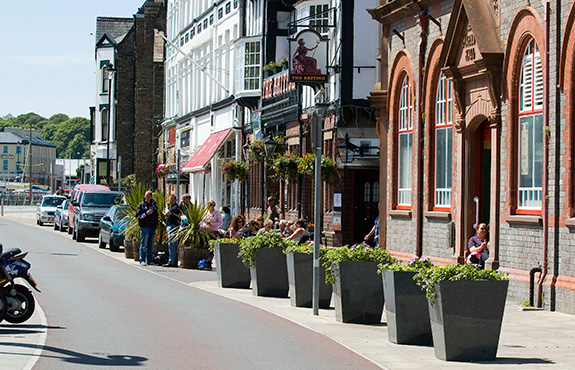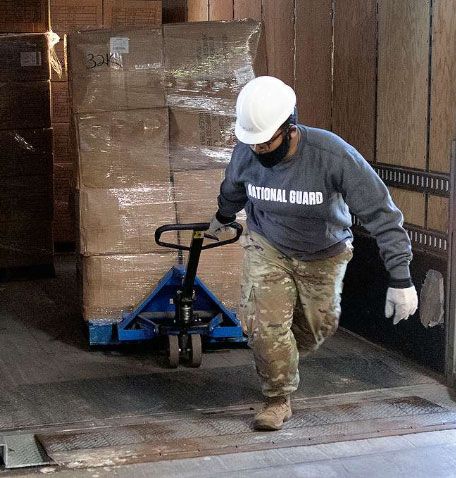Introduction: The Unsung Hero of Commercial Design
In the world of commercial construction and design, every element carries weight—both literally and figuratively. While architects and builders meticulously plan structures, facades, and interiors, the finishing touch of the outdoor space often rests on a critical decision: the selection of planter boxes.
For commercial projects—be it a sleek corporate headquarters, a welcoming apartment complex, a bustling retail precinct, or a luxurious hotel—planters are far more than simple containers for greenery. They are architectural statements, spatial definers, brand ambassadors, and durable assets that must withstand the rigours of public life. A well-chosen planter elevates the space; a poor choice becomes a recurring maintenance cost and an aesthetic flaw.
This guide is designed for the professionals who bring these spaces to life: architects, landscape architects, builders, developers, and project managers. We will move beyond basic horticulture and delve into the critical considerations of material selection, design integration, technical specifications, and project logistics that ensure your commercial landscaping is not only beautiful on day one but remains impeccable for years to come.
Beyond Aesthetics – The Functional Roles of Planters in Commercial Spaces
Before selecting a planter, understand its intended job. In commercial landscaping, planters serve multiple key functions:
Spatial Definition and Wayfinding
Large trough planters are exceptionally effective at creating natural barriers without building walls. They can define pedestrian walkways, separate outdoor dining areas from foot traffic, create privacy screens around seating nooks, and gently guide the flow of people through a plaza or rooftop garden.
Architectural Cohesion
Planters should complement the building’s design language. The choice of material, colour, shape, and finish is crucial. A minimalist, angular fibreglass planter in a concrete finish complements a modern glass-and-steel building, while a more ornate, classical urn might suit a heritage-inspired facade.
Brand Identity
Corporate campuses and retail spaces can use planters to reinforce brand identity. Custom colours or sleek, innovative designs can subtly communicate a company’s values—modernity, sustainability, or robustness.
Practical Problem-Solving
Planters are versatile tools for addressing site-specific challenges. They can conceal unsightly utility boxes, provide a buffer from street traffic, improve acoustics by absorbing sound in hard-surfaced areas, and even enhance security as part of a hostile vehicle mitigation (HVM) strategy when specified correctly for weight and strength.
Key Design Considerations for Commercial Planter Projects

Focal Point Creation:
A strategically placed, oversized planter can act as a powerful focal point, serving as the visual anchor of a space. To maximize this effect, consider using designs with bold forms or dramatic plantings to draw the eye and establish a strong point of interest.
Spatial Definition:
In expansive areas, large planters function as elegant, natural dividers. They can effectively separate distinct zones—such as dining areas from walkways on a hotel terrace—without the need for solid walls, maintaining an open feel while creating definition.
Vertical Dimension:
Introducing tall, substantial planters adds critical verticality to a landscape. This creates dynamism and architectural interest, which is particularly valuable in urban environments where ground space is limited, preventing the area from feeling flat.
Architectural Harmony:
The scale of planters must be in dialogue with the surrounding architecture. Oversized planters can balance the grandeur of large structures, while thoughtfully scaled large planters can enhance the proportions of more intimate spaces without overwhelming them.
More on Landscape with Planters Design Guide.
The Material World – A Comparative Analysis of Planter Options
The choice of material is the most consequential decision you will make. It impacts aesthetics, durability, maintenance, logistics, and budget.

Fibreglass (GRP) Planters: The Modern Professional’s Choice
High Strength-to-Weight Ratio:
This is the paramount advantage. Large fibreglass planters offer the visual impact of concrete or stone but are a fraction of the weight. This simplifies shipping, reduces freight costs, and makes installation dramatically easier and safer, often without the need for heavy machinery on-site.
Durability & Stability:
Premium fibreglass planters, like those from Sigma Planters backed by a 3-year warranty, are engineered to be UV-stable, frost-resistant, and waterproof. They will not crack, chip, or fade excessively in the Australian climate, unlike lower-quality materials.
Aesthetic Flexibility:
They can be moulded and finished to mimic other materials with remarkable authenticity. The concrete finish is incredibly popular for commercial projects, offering the desired industrial-chic look without the weight.
Shape and Size:
From small cubes to extra-large troughs over 200 litres, fibreglass can be moulded into virtually any form to meet design specifications.
Concrete Planters: The Traditional Heavyweight
- Pros: Unmatched perceived permanence and mass. Excellent for wind-resistant applications where weight is a benefit (e.g., exposed rooftop gardens). Naturally heavy for security purposes.
- Cons: Extremely heavy, leading to very high freight costs and complex, expensive installation requiring cranes or forklifts. Prone to cracking in freeze-thaw cycles (relevant in some Australian regions) and can stain easily. Difficult to move or reconfigure once placed.
Metal Planters (Corten Steel, Powder-Coated Steel)
- Pros: Corten steel offers a distinctive, evolving rusty patina that is highly desirable in modern design. Powder-coated steel provides a sleek, contemporary look in a wide range of colours.
- Cons: Corten steel stains surrounding surfaces with its run-off. Both types can be prone to denting in high-traffic areas. Without proper internal lining, they can heat up excessively, damaging root systems. They often require custom fabrication, which can be costly and slow.
Plastic (Polyethylene) and Timber Planters
- Pros: Low cost and very lightweight.
- Cons: Often look cheap and lack the architectural gravitas required for high-end commercial projects. Plastic becomes brittle and fades under intense UV exposure. Timber rots, requires constant maintenance, and has a relatively short lifespan. These are generally unsuitable for permanent, premium commercial applications.
Design Applications of Planters for Large-Scale Projects
Urban Environments:
In the hard landscapes of cities, planters are indispensable tools for urban designers. They bring vital greenery to concrete-dominated areas, improving air quality and pedestrian experience. Their durability is key, as they must resist heavy use, potential vandalism, and harsh weather while contributing to the identity and aesthetic of the public realm.
Example: A once-barren city plaza is transformed into an inviting public space using a grid of large, durable planters filled with trees and shrubs. They define seating areas, provide shade, and soften the architectural environment without requiring permanent, immovable structures.
Commercial Settings:
Planters are used strategically in commercial settings to shape customer and visitor experience. They can frame a building’s entrance, making it feel more welcoming and established. On corporate campuses, they define walking paths and create outdoor “rooms” for relaxation. In retail, they can subtly guide foot traffic and enhance the brand’s image through careful selection of style and colour.
Example: A tech company uses minimalist, metallic planters at its headquarters’ entrance to reinforce its brand identity of innovation and modernity, while a boutique hotel uses ornate, traditional planters to accentuate its classic luxury brand.
Residential Developments:
Beyond single-family homes, planters are crucial in multi-unit developments like apartment complexes and townhouse communities. They provide private green space where in-ground planting is impossible, such on balconies, rooftops, and within shared courtyards. They add a layer of sophistication and help define different activity zones within a development’s landscape.
Example: On the rooftop terrace of a condominium building, a series of planters defines the boundary of the space, creates a privacy screen from neighbouring buildings, and allows residents to garden, transforming a bare roof into a valuable amenity.

Space Definition:
Planters offer a flexible, non-permanent solution for spatial planning. A row of planters can effectively separate a restaurant’s outdoor dining area from a public sidewalk, creating a psychological and physical barrier that is more inviting than a fence. They can also be used to create serpentine pathways in a park or to cordon off areas temporarily for events.
Example: At an outdoor café, a line of low, wide planters brimming with flowers elegantly separates the dining tables from the pedestrian footpath, ensuring patron safety and comfort without creating a visually obstructive wall.
Rooftop Gardens and Balconies:
The use of lightweight, high-strength materials makes large planters ideal for elevated environments where structural load capacity is a primary concern. This enables substantial greenery in areas with strict weight restrictions without compromising safety or design intent.
Modern Commercial Landscapes:
Contemporary planter designs featuring sleek, geometric forms and sophisticated finishes enhance the aesthetic of corporate campuses, retail centres, and hospitality venues. The versatility of modern manufacturing allows for custom colours and textures that complement architectural themes.
Interior Plantscaping:
Large planters facilitate substantial interior biophilic design, introducing striking natural elements into lobbies, atriums, and other indoor spaces. Advanced materials enable impressive sizes without excessive weight, making them suitable for various floor applications.
Integrated Water Features:
Waterproof planter designs allow for seamless incorporation of combined planter and water feature installations. These multi-functional elements add a dynamic, sensory dimension to landscapes while maintaining structural integrity.
Architectural Planter Solutions
Modern planter manufacturing techniques have evolved to offer solutions that combine structural integrity with design flexibility. Advanced composite materials provide exceptional durability while allowing for diverse aesthetic expressions, from sleek contemporary finishes to textured traditional appearances.

Design Advantages of Architectural Planters
Structural Integrity:
These planters are not simple pots; they are engineered systems designed for public and commercial use. They are built to resist cracking from freeze-thaw cycles, fading from intense UV exposure, and damage from impact in high-traffic areas. This ensures they remain a beautiful and safe part of the landscape for years, minimising maintenance and replacement costs.
Example: A planter in a busy shopping precinct must withstand accidental bumps from trolleys, extreme summer sun, and heavy rain without cracking, chipping, or degrading in appearance.
Design Versatility:
Modern fabrication techniques, such as moulding and casting, liberate designers from traditional forms. This allows for complete customisation to match architectural themes, from sharp, minimalist cubes that complement a modern office building to fluid, organic shapes that soften a urban streetscape. A vast array of finishes—including realistic stone and concrete textures, metallic paints, and bold monochromatic colours—ensures the perfect aesthetic match.
Example: A hotel lobby might feature a series of sleek, glossy white planters to enhance a luxurious ambiance, while a public park could use planters with a textured, weathered-corten steel finish to achieve a more industrial, naturalistic look.
Material Performance:
The advanced composites used today solve the classic dilemma of weight versus durability. They provide the robust feel and weather-resistant properties of heavy materials like concrete but at a fraction of the weight. This dramatically simplifies logistics, reduces freight costs, and makes on-site handling safer and faster, often without the need for heavy lifting equipment.
Example: A large, 6-foot planter can be easily manoeuvred into position on a rooftop garden by two people, whereas a concrete equivalent of the same size would require a crane for installation.
Site Integration:
Architectural planters are designed as integral components of the hardscape, not as afterthoughts. They can be specified to directly complement the colour, texture, and form of surrounding materials like pavers, seating, and building cladding. This creates a harmonious, intentional, and polished look, as if the planters and the space were designed together from the outset.
Example: In a plaza paved with grey granite, square planters of a similar tone and finish can be used to create a seamless extension of the ground plane, with greenery appearing to emerge naturally from the stone.
Scale Appropriateness:
True architectural planters are designed to support arboricultural health and structural stability. They are proportioned to provide ample volume for the root balls of large trees and shrubs, ensuring long-term plant viability. Their construction is engineered to be stable enough to prevent tipping in wind, even when supporting the significant weight of soil and a mature tree.
Example: A civic square features large, deep planters that successfully support mature olive trees, providing both immediate impact and a sustainable environment for the trees to thrive for decades.

Advanced Design Considerations
Composition and Grouping:
Creating arrangements of planters in varying sizes and heights adds visual interest and depth to landscapes. Consider using taller elements as backdrops for lower planters to establish layered compositions.
Plant Selection Strategy:
The choice of vegetation should complement the planter’s form while considering mature size and growth habits. Specimens with distinctive foliage, colour variations, and textural qualities maximise visual impact. See the full guide on Plant Selection for Containers
Seasonal Adaptability:
Large planters offer opportunities for dynamic seasonal displays, particularly valuable for commercial properties seeking to maintain fresh, engaging environments throughout the year.
Integrated Lighting:
Incorporating illumination within or around planters enhances nighttime presence, highlighting both architectural forms and plant textures while extending the functional use of outdoor spaces.
Water Management:
Proper drainage systems are essential for plant health. Commercial applications benefit from integrated irrigation solutions that ensure consistent moisture levels while simplifying maintenance.
Accessibility and Maintenance:
Planter placement should allow for practical maintenance access. Considerations include watering, pruning, and seasonal changes, with weight management strategies employed for very large installations to facilitate future handling.
The Selection Checklist – 8 Key Questions to Ask Before You Specify
- What is the primary function? (Wayfinding, aesthetic highlight, seating, security?)
- What is the architectural style? Does the planter need to blend in or make a bold statement?
- What are the weight restrictions? This is critical for rooftop gardens, balconies, and over-structures. The lightweight nature of fibreglass is often the only viable solution here.
- What is the public traffic like? In high-traffic areas, durability and resistance to impact are paramount. A robust fibreglass planter will withstand knocks from trolleys, bikes, and crowds far better than concrete or metal.
- What are the drainage requirements? Ensure the planter has adequate drainage holes. For indoor use or on sensitive surfaces, a sealed interior pot or a drip tray system is essential to prevent water damage.
- What is the horticultural vision? The size and volume of the planter must be appropriate for the mature size of the plants or trees specified by the landscape architect.
- What is the project timeline? This is where stock availability becomes a major factor. Can you wait 3-4 months for custom or made-to-order, or do you need a solution that is available for immediate dispatch to keep the project on schedule?
- What is the total lifecycle cost? Consider not just the purchase price, but the costs of freight, installation, maintenance, and replacement. A slightly more expensive but durable and lightweight fibreglass planter often has a lower total cost of ownership than a cheaper but heavy, fragile, or high-maintenance alternative.
The Logistics of Large-Scale Projects: Installation and Planning
A successful commercial installation hinges on seamless execution and meticulous planning. For project managers and builders, understanding the logistics of delivering and installing large planters is critical for maintaining your project timeline and budget.
Site Access and Delivery Considerations
 The lightweight nature of fibreglass planters is a significant advantage, allowing large units to be manoeuvred by a small team through standard access points, doorways, and elevators—something that is often impossible with heavier concrete counterparts.
The lightweight nature of fibreglass planters is a significant advantage, allowing large units to be manoeuvred by a small team through standard access points, doorways, and elevators—something that is often impossible with heavier concrete counterparts.
To ensure a smooth delivery, consider these key points:
- Freight & Equipment: Planters are typically shipped secured on pallets for safety. The most common and cost-effective method is delivery via a tailgate truck, operated by a single driver. The driver will use a pallet jack to move the shipment across level surfaces.
- Site Preparedness: It is the recipient’s responsibility to provide clear, accessible parking for a mid-size truck and a level path to the unloading point. Drivers cannot navigate pallet jacks up curbs, stairs, or steep driveways. Ensure ample space is available for the driver to safely unload and leave the pallets.
- Timing & Storage: Freight companies usually provide an estimated delivery window and may call an hour or so in advance. Have a plan for where the palletised planters can be stored if they are not to be unpacked and installed immediately. All packaging materials will be left on site.

The Critical Advantage of Stock Availability
A critical path item many projects overlook is lead time. The ability to source large, premium planters from available stock can prevent costly project delays. This operational advantage allows for the selection and procurement of planters even late in the project timeline without compromising on quality or design intent.
However, even with in-stock items, a realistic timeline is essential. Always allow a minimum of two weeks from order finaliaation to delivery. This accounts for the time required to safely pack large, bulky items and buffers against potential transport delays due to weather or other logistical issues.
Post-Delivery: Installation and Warranty
Once delivered, correct handling and installation are paramount to ensuring the longevity of your investment.
- Installation: Planters must be placed on stable, level ground. While built-in feet provide sufficient elevation for drainage, any additional feet must support the entire base evenly to prevent stress and potential cracking.
- Planter Care: Always use a premium, professional-grade bagged potting mix to ensure proper drainage and plant health, and to comply with warranty conditions. Protective packaging should be removed from painted surfaces soon after delivery to prevent moisture buildup.
- Understanding Your Warranty: A robust warranty is a sign of quality. Most cover manufacturing defects that affect structural integrity for several years. It is important to understand that warranties do not cover natural wear and tear (like fading or minor hairline cracks), damage from improper handling, or modifications such as drilling additional holes or blocking drainage systems. Always review the specific terms and conditions provided by your supplier.
By factoring these logistical considerations into your project plan from the outset, you can ensure a smooth process from selection to installation, allowing you to focus on the finished aesthetic of your commercial space. Sigma Planters offers a 3-Year Warranty which can be extended to 5 years.
The Sigma Planters Advantage – Engineered for Commercial Success
At Sigma Planters, we understand the complex demands of commercial projects. Our products and services are specifically designed to meet these challenges head-on.
- Premium, Lightweight Fibreglass Construction: We specialise in large-scale planters (over 200L) and troughs, providing the architectural presence you need without the logistical nightmare. Our planters are engineered for durability in the Australian environment.
- Unmatched Stock Availability: We hold extensive stock of our most popular lines, including large trough planters and concrete-finish designs. This means we can often fulfil large orders for urgent projects, providing a critical advantage when timelines are compressed.
- 3-Year Warranty: We stand behind our products with a comprehensive warranty. This provides peace of mind for builders and developers who need to guarantee the quality and longevity of the finishes they install, protecting their reputation.
- Custom Solutions: For projects with unique requirements, we offer custom manufacturing for full container loads, allowing for complete design flexibility for the right scale of project.
- Sample Service: We encourage professionals to request free sample tiles. Seeing and feeling the quality of our fibreglass finish—its weight, texture, and colour—is the most effective way to appreciate its superiority over alternatives before specifying for a major project.
Conclusion: Specifying with Confidence
The selection of planters for a commercial property is a significant decision that intersects design, engineering, logistics, and horticulture. By prioritising material performance, understanding the functional requirements, and carefully planning for installation, you can ensure that the landscaping elements of your project enhance its value, beauty, and functionality for years to come.
In today’s fast-paced construction environment, the ideal solution combines aesthetic versatility with undeniable practical advantages: durability, lightweight engineering, and immediate availability. By choosing premium fibreglass planters from a trusted supplier, you are not just buying a container; you are investing in a seamless, successful, and stunning project outcome.
Ready to Specify with Confidence?
Explore our range of commercial-grade planters, see our projects, or request your free samples today.


0 Comments